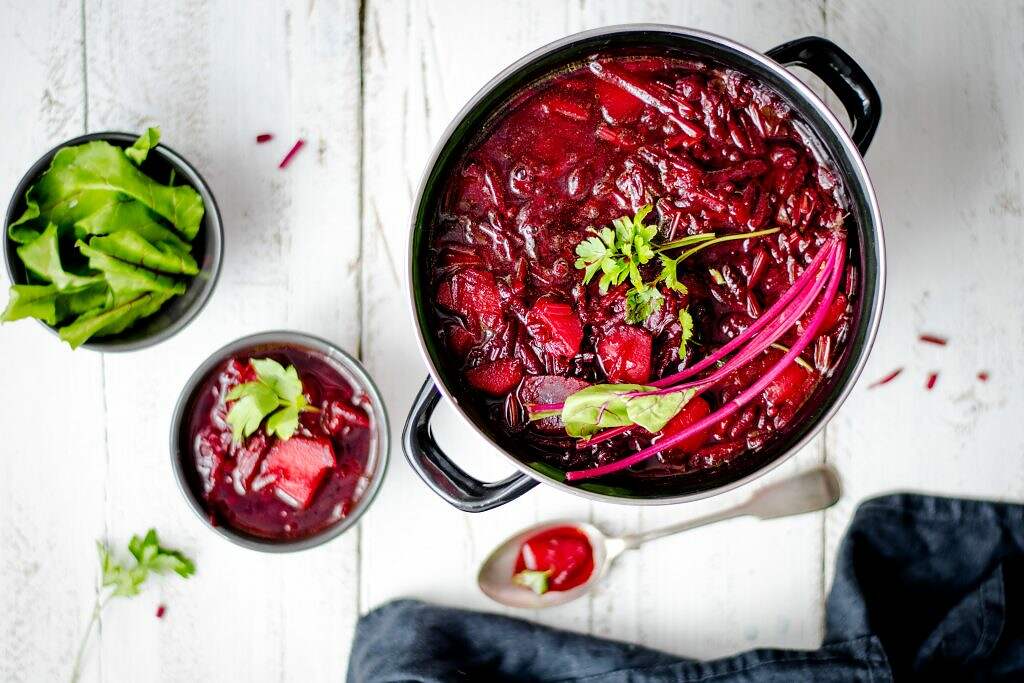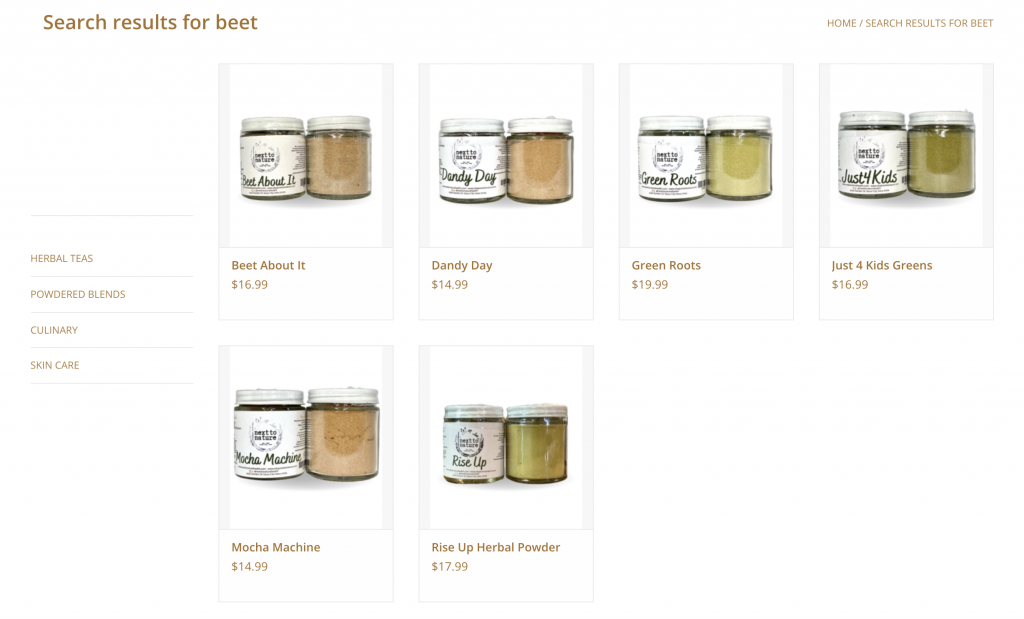Whether you love them or hate them, beetroots, commonly known as beets, are good for your health because they are packed with essential nutrients. It is no surprise Jamie has it in several of her herbal powder blends for the entire family.
Beetroots are a great source of fiber, folate (vitamin B9), manganese, potassium, iron, and vitamin C, making this vegetable a superfood. Beetroots and beetroot juice have been associated with numerous health benefits, including improved blood flow, lower blood pressure, and increased exercise performance and they are packed with essential vitamins, minerals, and plant compounds, many of which have medicinal properties. They are vibrant, many of which are distinguished by their color — yellow, white, pink, or dark purple, and versatile type of vegetable.
In addition to bringing a pop of color to your plate, beets are delicious and easy to add to your diet in dishes like balsamic roasted beets, hummus, fries, and salads, among many others. That color can help you create something colorful with actual health benefits!
Here are 3 benefits of beets, plus a tasty way to add beets into your diet.
Support brain health.
Mental and cognitive functions naturally decline with age, which can increase the risk of neurodegenerative disorders like dementia. The nitrates in beets may improve brain function by promoting the dilation of blood vessels and thus increasing blood flow to the brain. Particularly, beets have been shown to improve blood flow to the frontal lobe of the brain, an area associated with higher level thinking like decision making and working memory.
Furthermore, a study in people with type 2 diabetes found that reaction time during a cognitive function test was 4% faster in those who consumed 8.5 ounces (250 mL) of beetroot juice daily for 2 weeks, compared with a control group.
Help balance energy intake.
Beets have several nutritional properties that could make them a great addition to a balanced diet.
They’re low in fat and calories but high in water, which can help balance your energy intake. Increasing your intake of low calorie foods like this root vegetable has also been associated with weight loss.
Despite their low calorie content, they contain moderate amounts of protein and fiber. Both of these nutrients can make it easier to achieve and maintain a moderate weight. The fiber in beets may also support digestive health, decrease appetite, and promote feelings of fullness, thereby reducing your overall calorie intake.
By including them in smoothies or other recipes, you can easily increase your intake of fruits and vegetables to improve the quality of your diet.
Delicious and easy to include in your diet.
Beets are not only nutritious but also incredibly delicious and easy to incorporate into your diet. You can juice, roast, steam, or pickle them. For a convenient option, you can purchase them precooked and canned. You can even enjoy them raw, either sliced thinly or grated.
Choose beets that feel heavy for their size with fresh, fluffy green leafy tops still attached, if possible. Because dietary nitrates are water-soluble, it’s best to avoid boiling beets if you’d like to maximize their nitrate content.
Here are some delicious and interesting ways to add more beets to your diet:
- Salad. Grated beets make a flavorful and colorful addition to coleslaw or other salads.
- Dip. Beets blended with Greek yogurt and fresh garlic make a delicious, healthy, and colorful dip.
- Juice. Fresh beetroot juice is typically better than store-bought versions, which can be high in added sugar and contain only a small amount of beets.
- Leaves. You can cook and enjoy fresh beet leaves similarly to how you’d use spinach.
- Roasted. Wedge beetroots and toss them with a little olive oil, salt, pepper, and herbs or spices of your choice, like our Oh Wow!. Then, roast them in a 400°F (205°C) oven for 15–20 minutes until they’re tender.

Nutritional Profile
Beets boast an impressive nutritional profile. They’re low in calories yet high in valuable vitamins and minerals. In fact, they contain a bit of almost all of the vitamins and minerals your body needs.
Here’s an overview of the nutrients found in a 3.5-ounce (100-gram) serving of boiled beetroot:
- Calories: 44
- Protein: 1.7 grams
- Fat: 0.2 grams
- Carbs: 10 grams
- Fiber: 2 grams
- Folate: 20% of the Daily Value (DV)
- Manganese: 14% of the DV
- Copper: 8% of the DV
- Potassium: 7% of the DV
- Magnesium: 6% of the DV
- Vitamin C: 4% of the DV
- Vitamin B6: 4% of the DV
- Iron: 4% of the DV
Beets are particularly rich in folate, a vitamin that plays a key role in growth, development, and heart health…also very important during pregnancy.
They also contain a good amount of manganese, which is involved in bone formation, nutrient metabolism, brain function, and more. Plus, they’re high in copper, an important mineral required for energy production and the synthesis of certain neurotransmitters.
Is it making sense why we talk about beets so much?!
If you’ve been in our store or gotten any of our herbal powder blends, you know many have beet powder within them. Why? The health benefits of beets stack up. Now that you are intrigued to use beets more, could you use some creative and healthy dinner ideas for the entire family? Perhaps, you’re looking to spruce up some already made classics to make them go in farther in your household. Glad you’re here in the right spot for just that! We have 4 recipes using Jamie’s power packed beet broth and her famous bone broth ready for you to take and make your own.
Ready to try one of our blends? You can have them hot, in a smoothie or cold water, or toss in food you are cooking – so easy!

Stay connected with us and with nature!
Social Links:
Instagram: https://www.instagram.com/nexttonaturehealth/
Facebook: https://www.facebook.com/nexttonaturehealth
Online Shop: https://www.shopnexttonature.com/
